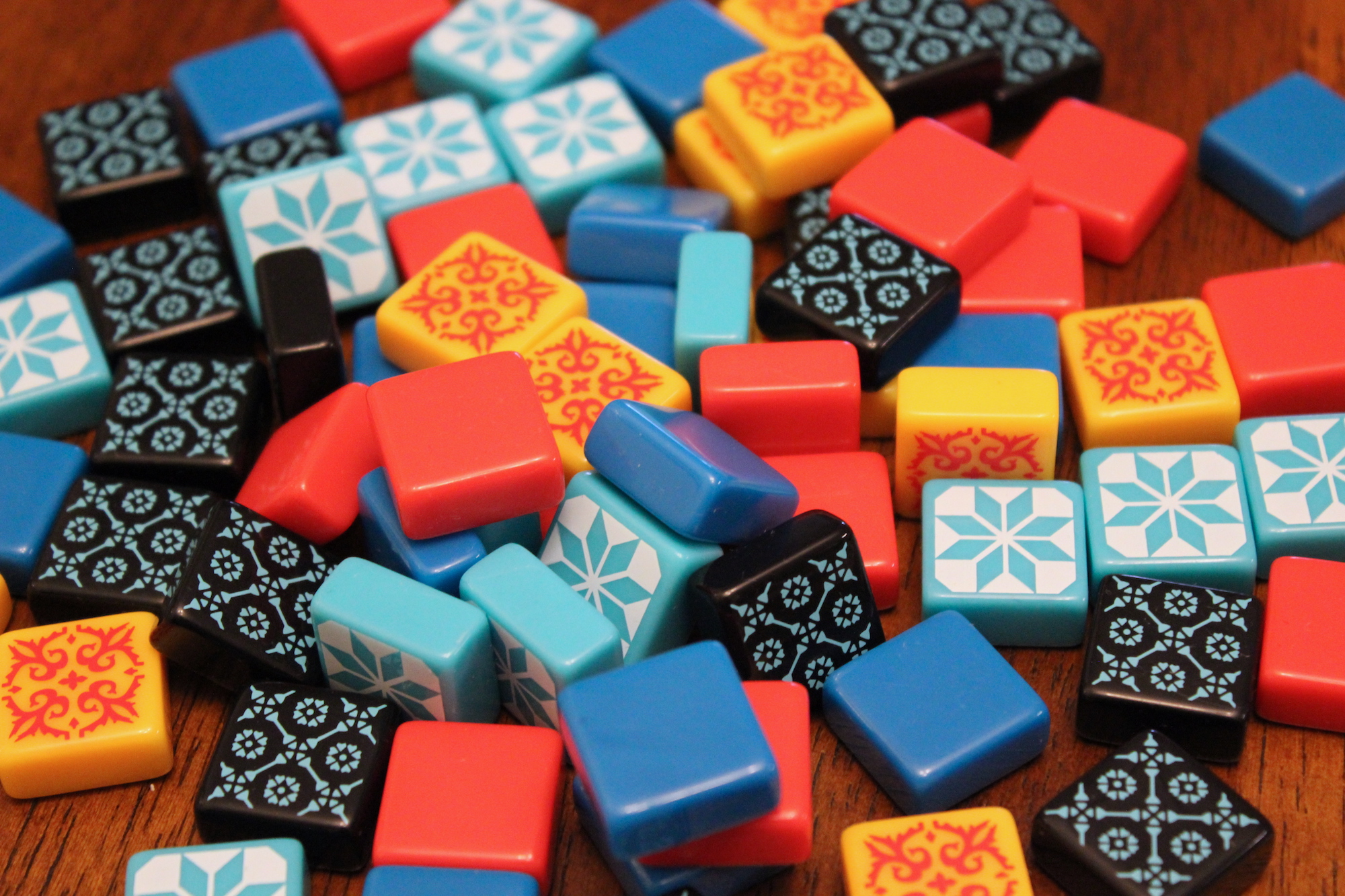Azul is a tile-placement game where players are tile-laying artists tasked with decorating the walls of the Royal Palace of Evora. The game is inspired by “azuleijos,” ceramic tiles introduced to the Portuguese by the Moors. In the game, players draft tiles from “factories” in order to cover their board, which is meant to be a wall of the palace.
The setup of the game is quite simple: each player is given a game board, some predetermined number of factories are placed in the center of the table, and four tiles randomly drawn from a bag are placed on each factory. The game proceeds in rounds consisting of two main phases. The first phase is “Factory offer,” where players draft tiles from the factories and the table. Players alternate drafting all tiles of the same color from either the factories or the table. If they take from the factories, the remaining tiles from that factory are placed on the table. This proceeds until all of the tiles are gone. The second phase is “Wall-tiling,” where players score points by placing tiles onto their walls based on sets they’ve completed. The wall is a 5×5 grid, and the game ends when at the end of a round a player has filled a horizontal row.
Before even getting into any of the actual gameplay, it is worth noting the tactile enjoyment of picking plastic rectangular prisms from a bag and placing them in patterns on a board. In fact, the size, shape, and color of the tiles gives them a striking resemblance to starburst candies.
Although the game calls for 2-4 players, I only played Azul with two players. Therefore, I can only speak for its gameplay in the two-player setting. The rounds went very quick and the game didn’t take much longer than 30 minutes. Although the rounds may seem repetitive, the game evolves in different ways and each round requires a different strategy. Furthermore, the random placement of tiles on factories guarantees that each round is likely to have a unique board starting state. This makes planning ahead difficult but necessary, and it keeps the game from getting stale.
The strategy present in the game can be subtle. At first, my friend and I accidentally assumed that when we draw from the table, we have to put all of the excess pieces on our “floor,” causing us to deduct points from our scores. At first, this meant we were losing more points than we were earning; however, as the game went on we were finally getting surpluses, and strategic elements emerged nonetheless. Taking tiles from the table could be expensive in excess tiles, but the tiles you receive could make up for the loss. If I were designing the game, I think I would experiment more with this variant to see if it was worth incorporating elements of it into the game.
If I were to change anything about Azul, I would allow players to create more combinations on their tile board and/or allow players to customize where tiles are placed on their board. It seems like a core pillar of the game is allowing players to create tile art, so having preset art removes this as a possibility. I only played the basic variant, so I did not experience the other side of the game board with gray squares which may incorporate these ideas.
I enjoyed playing this game with my friend, and I imagine it could be very fun with more players. The game is easy to learn, so I highly recommend it to beginners.
